Wild parsnip is undoubtedly one of the most misunderstood plants in the world. In North America, the plant is seen as a scourge and a terrifying weed that can only be killed by Round-Up or other herbicides.
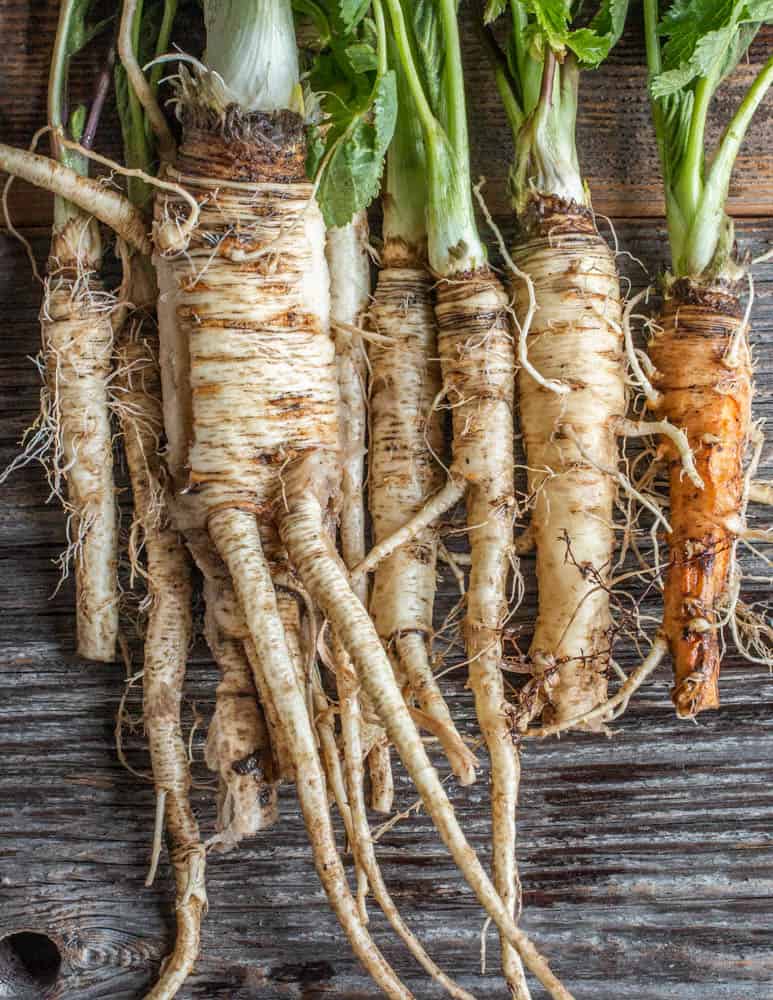
Get ready for some forager myth-busting, because I'm going to show you the truth: the plant some people call poison parsnip is not the demon it's made out to be-it's actually edible, tastes great, and is a direct descendant of garden parsnip.
The Truth
The truth is going to be hard for a few people. As with all wild foods, one of the most useful things is the Latin name of the ingredient in question, and this is especially useful with feral parsnips.
The Latin name of wild parsnip is Pastinaca sativa. Confusingly, the Latin name of garden parsnip also Pastinaca sativa, and now you probably understand where I'm going with this. Simply put, wild parsnip and garden parsnip are literally the same plant, identical in nearly every way on the species level, and the two plants will cross-pollinate.
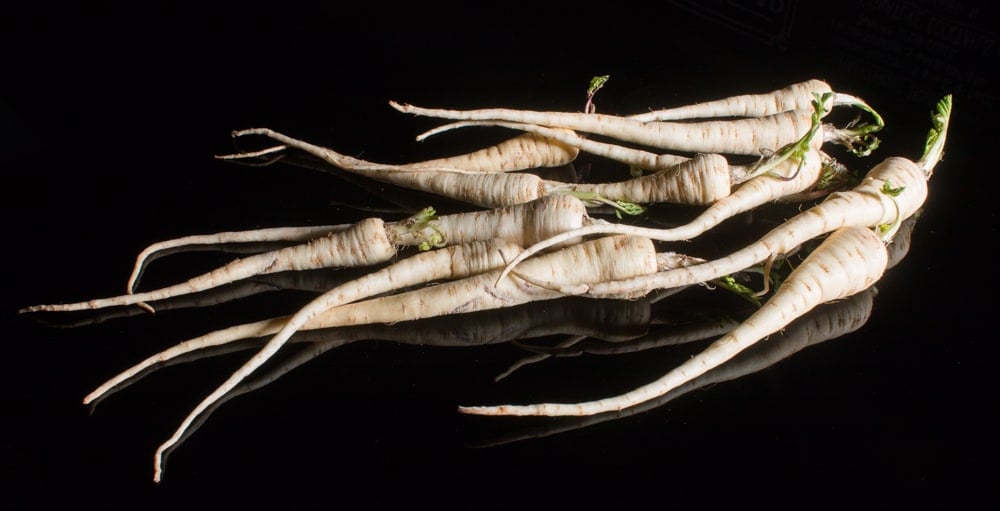
You might be thinking: "That's not true!" "Wild parsnip is dangerous, garden parsnips are not, I know because I've eaten them!". The fact is that Latin doesn't lie, it just takes a little digging, literally and figuratively, to see why there's such a dichotomy in the information available on the plant. Think of it this way: both wild and cultivated parsnips are potentially dangerous, but also edible.
"Wild parsnip Pastinaca sativa is exactly the same plant as garden parsnip, it just happens to grow wild". Samuel Thayer, The Forager's Harvest.
History
Originally from Eurasia, parsnips have been used as a vegetable since ancient times, and, like other wild plants I eat and enjoy, it was probably brought over by European immigrants coming to North America as food, as was likely the case with watercress, wild carrot, garlic mustard, and others.
Just like with the other plants, someone probably planted parsnips in their garden those parsnips escaped cultivation, spreading around the country.

The Rash
What most people are concerned about is that wild parsnip can cause intense rashes/burns and blisters. The fact is, parsnip is only one of a number of related plants that can do this in the carrot family Apiaceae.
The wild parsnip rash is caused by compounds called furanocoumarins in juices from the above-ground (green) parts of the plant, activating if they come into contact with skin in the sunlight. The exposure to sunlight is also why the rash is called "photodermatitis".
From what I know, depending on the extent of exposure, these rashes and blisters can be mild or intense requiring hospitalization, in bad cases, taking years for the affected area to heal and return to normal. I've had rashes from cow parsnip and angelica, which are similar, but they were only an inconvenience. I've never personally gotten a rash from harvesting wild parsnip.

This sounds alarming, but it's helpful to step back and think critically about it. For example (and this is a common one) if someone goes out into their field and uses a weed whacker to remove wild parsnip, the plant juices are going to fly all over the place and can easily cover large parts of the person's exposed skin during the sunlight, which will cause rashes.
Not only is trying to remove wild parsnip with a weed whacker dangerous, it's also inefficient. Since the root of the plant is underground, cutting off the green photosynthesizing parts that feeds it will only spur new growth, similar to if you trim a patch of herbs.
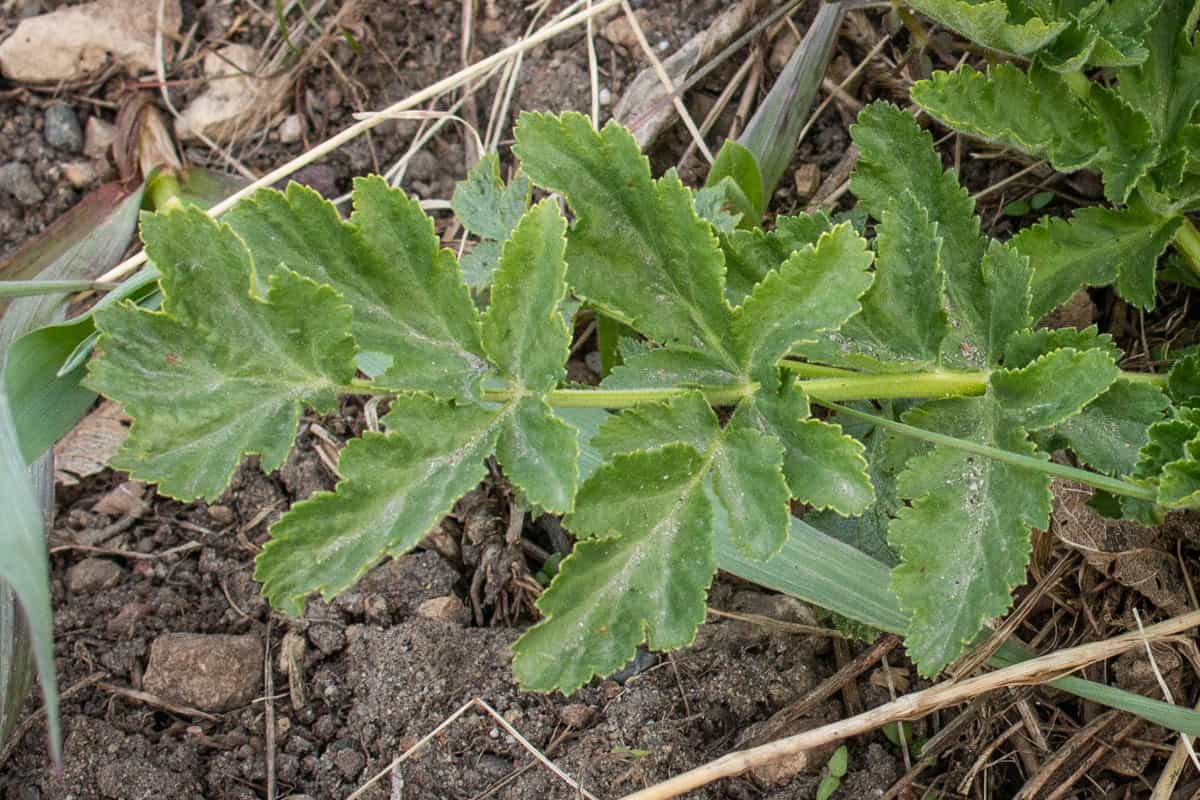
Mis-identification
Part of the reason I think wild parsnip is so demonized is that there's a number of plants with similar names, all of which can cause phototoxic burns and could be confused with one another if someone isn't familiar with the plants. Essentially, wild parsnip can get the bad rap of not one, but multiple plants.
Other related plants that cause rashes
The most common plants that can be confused with wild parsnip I know of are probably giant hogweed (Heracleum monteggazianum) and cow parsnip (Heracleum maximum and others). Wild carrot and its dangerous cousins like hemlocks have a casual remblance too, but their leaves are much more finely divided and resemble carrot leaves from a grocery store.
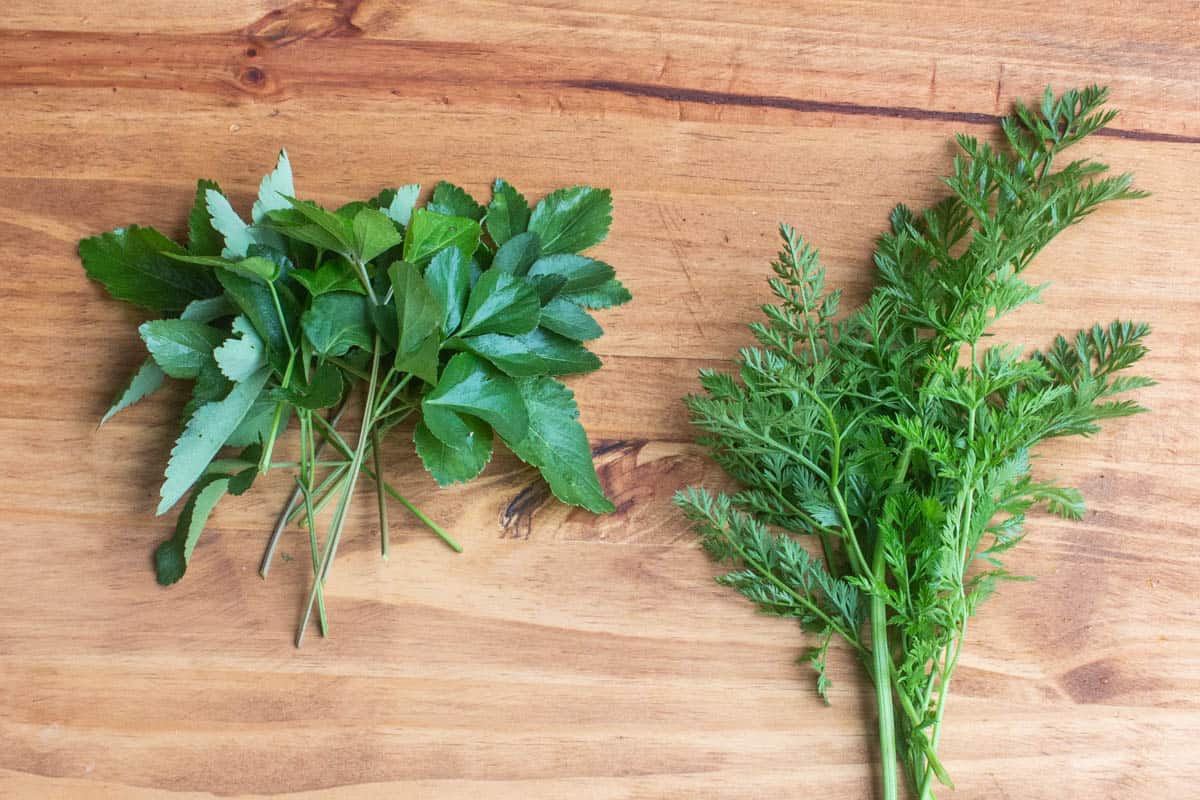
Hogweed and cow parsnip can give burns similar to wild parsnip, but, just like parsnip, both plants also have a long tradition being used as food dating back at least to the Middle Ages, and likely long before.
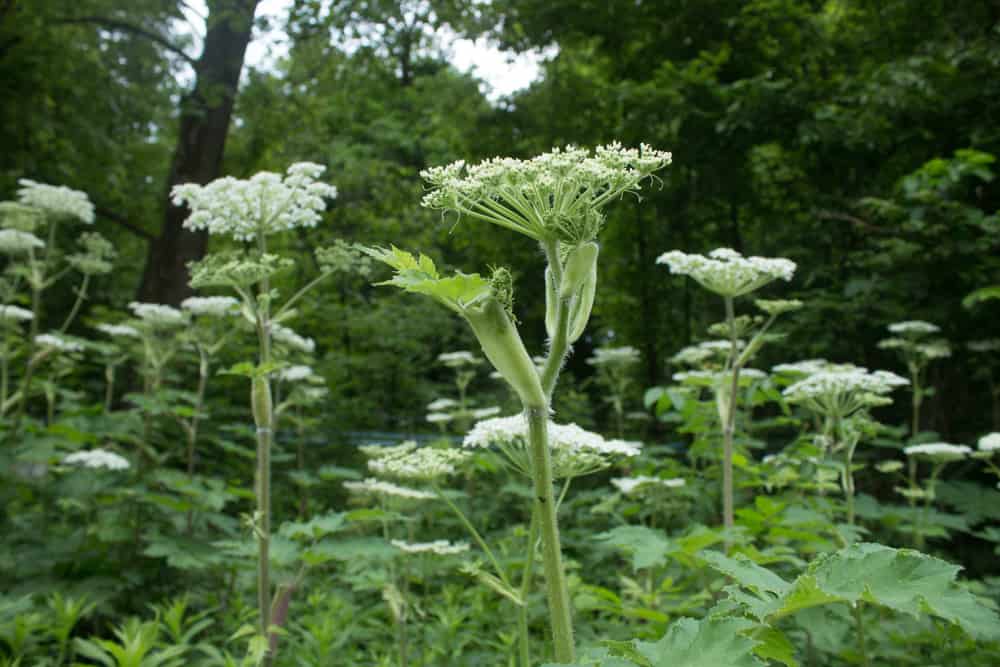
Angelica, another related plant, will also give a rash if the sap of the green parts gets on your skin, and, just like the others, also has a long tradition of being used as a food.
And, if that isn't enough to sway your prejudice, common garden celery, the same celery sitting in the produce section of your grocery store, is related to parsnips, and can also give a rash to some people who have a sensitivity to it. Read that last sentence again.
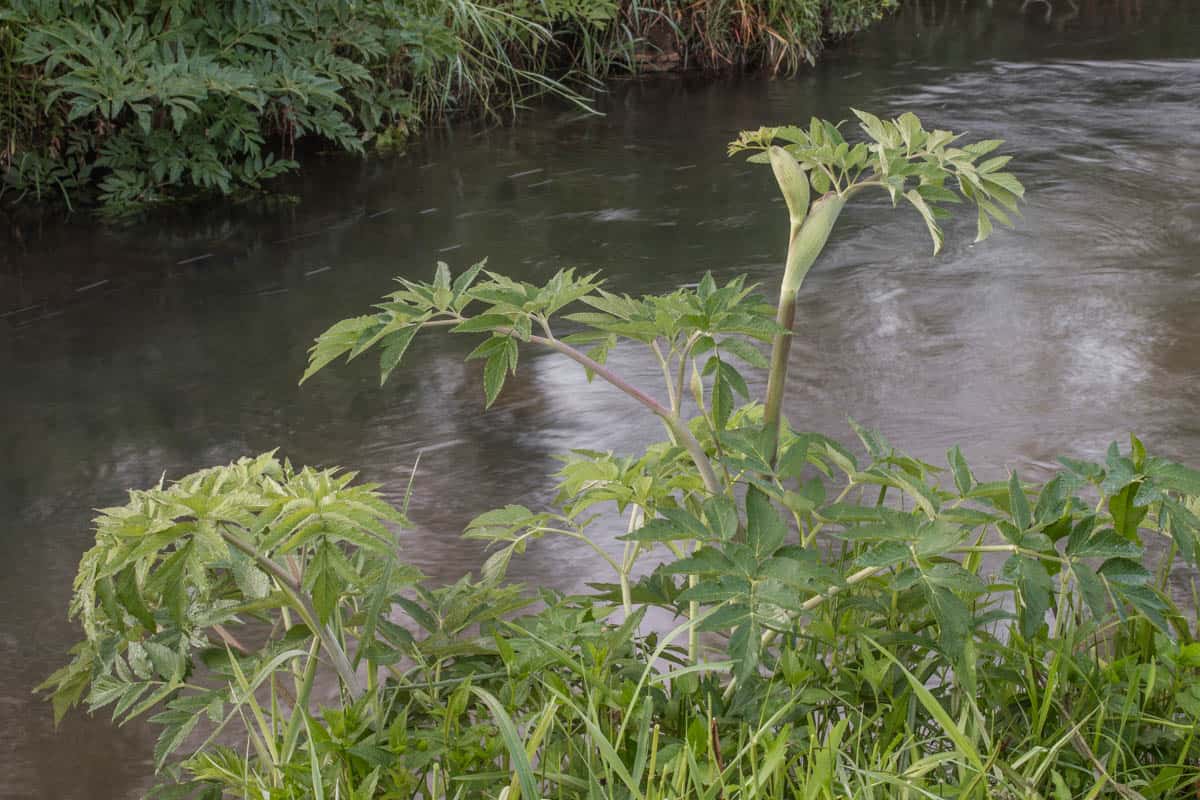
How to remove
Obviously, using a weed whacker to clear out wild parsnip is not only dangerous, but is only a temporary cure that doesn't' do much to eradicate the plant, although removing the green parts before they produce seeds can help to slow the spread.
To remove wild parsnips from an area, the most efficient, natural way I've found is to dig up the roots, which kills the plant and stops them from reproducing. Once the roots are dug up, you can carefully cut the green leaves from the plant and discard them.
You want to dig the roots in the spring, since there will be less of the above-ground parts of the plant that could give you a burn, which means you'll need to be able to identify young parsnip leaves. After you dig the roots, there will be dormant seeds that may continue to sprout for a while, but eventually they will cease with some casual maintenance.
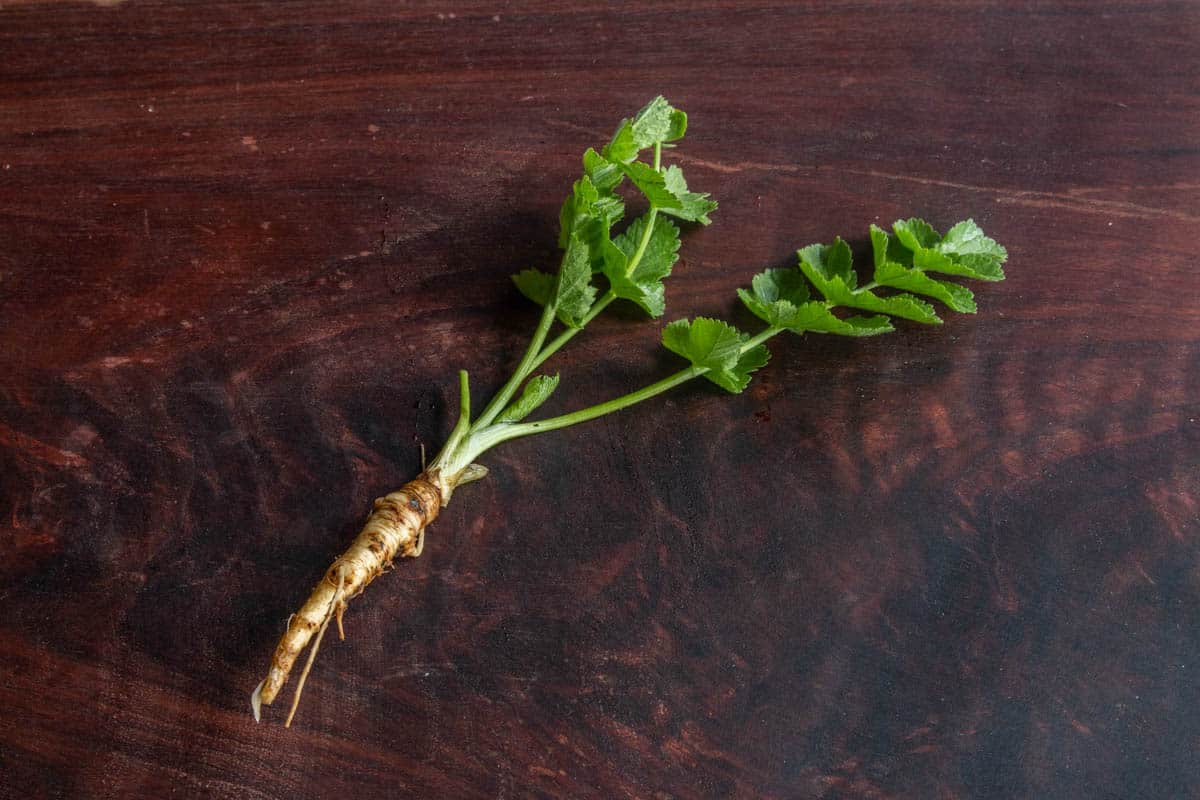
Harvesting
Just like garden parsnip, there's specific times when the roots are good to dig to eat. Basically, you want to dig the plants when they're in the basal rosette stage and not making flower stalks, which means they should be dug in the fall or spring.
Harvesting the roots in the summer when they're showing their flower stalks and green seeds heads will give you lackluster, limp, unappealing parsnips you won't enjoy.
Dig after a rain
It's easiest to dig roots when the ground is wet, so if you find patches in hard ground, remind yourself to go back the day after a good rain.
Edible Parts
Just like garden parsnips, wild parsnip has a number of edible parts you can eat, and some of them might surprise you.
Leaves
The leaves of wild parsnip are edible, and can be cooked as you would carrot greens. I haven't ever had a problem eating them, but one person has mentioned they gave her a scratchy throat-a relatively common sensitivity with many foods. If you harvest wild parsnip greens, make sure to wear gloves and not the the plant's juices on your exposed skin.

Roots
The roots of wild parsnip can be cooked in any way you would use regular parsnips, but they take a little more care and cleaning. The big differences being wild parsnip roots will have irregular shapes and sizes according to the terrain.
I also peel wild parsnips, where with grocery store parsnips I may not if the skin is thin. The core and rind of feral parsnips will also be more noticeable in wild plants, and I've had some that taste a little spicy, but that seems to fades after cooking.
Seeds
One of the more interesting things about the plants and some of their relatives, is that the seeds can be used as a spice. In Persian cuisine, the seeds of Heracleum sphondyllium are known as golpar and used to season legumes, among other things.
Over my years of experimenting with different wild plants, I noticed that the seeds of wild parsnip are nearly identical in flavor and can be used as a substitute for golpar, although they're smaller in size than Heracleum seed.
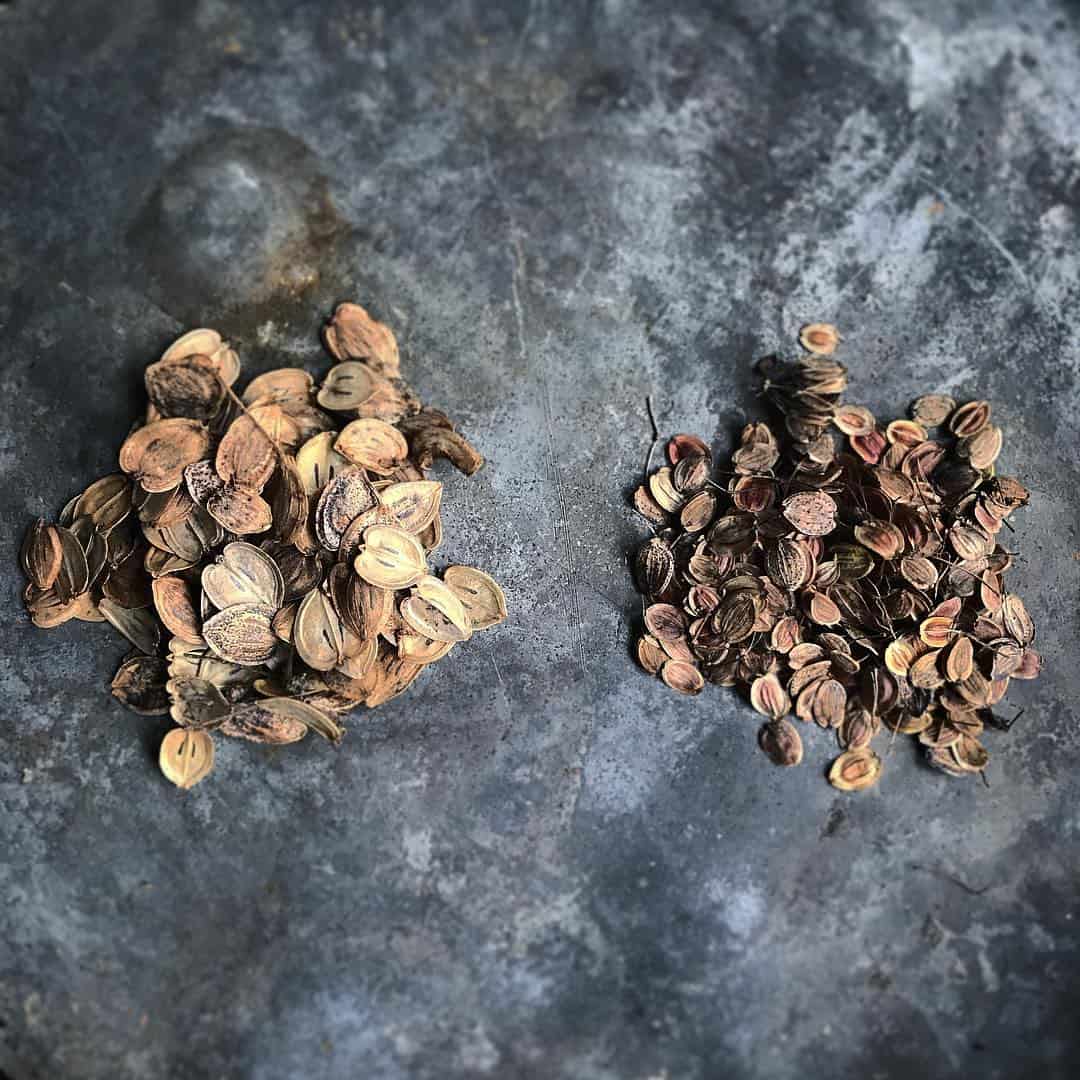
The best part, is that if you find wild fennel seeds when the plant is dried from the sun, you can harvest them without worry as the above-ground portion of the plant no longer contains the rash-causing compounds.
Cooking
Wild parsnips can be cooked anyway you would use regular parsnips. The biggest thing to know is that you should expect some variation depending on where you dig them.
If wild parsnips are growing in a ground that's very rocky, the roots may split or fork, and can be tricky to work with or clean. I usually use them as a soup vegetable.
Related Posts
Resources
The Forager's Harvest, by Sam Thayer

Ivan Stark
Im pretty sure this popped up in my garden, and I wanted to harvest the seeds. I originally thought it was celery or dill, but my brother came upon wild parsnip with a plant identifier app! Im trying to have a nice wild garden, with plenty of delicious purslane and stuff popping up right now!
Alan Bergo
Just be careful when handling the above ground green parts. After the plant is dried it is safe to harvest seeds. I grow cow parsnip in my yard for the seeds.
G. Royce
Thank you for the information in the article, but I think it doesn't go without saying that the careful reader should proceed with caution. There are numerous spelling mistakes (it's vs. its) and tense issues, but also, the "cut-and-paste" or perhaps AI-aided sourcing is evident. See the paragraph suddenly introducing fennel seeds. I say, gentle reader, please research information on this plant in offline sources or via less AI-infected media. I trust that most readers will naturally heed this advice, but I feel that a reminder can't hurt--both for readers of this type of article, but also for those who publish them. Forage on!
Alan Bergo
Damning with faint praise. The insinuation that any AI is used on this site is deeply offensive-this was published years ago before AI tools existed. There's also plenty of typos on this site, because I'm a chef by trade-writer by necessity, and, as any professional writer knows, it's pretty difficult to copy edit your own work. In our current era, having marks of being human in your writing is now proof of not using AI, tbh. For my books my publisher has a team of editors, for this site, it's just me-one person managing over 1000 articles, as well as all the images, which I also do myself.
Robyn
If you want to attack a website for being potentially AI-generated, you better damn well be sure that your accusation actually makes sense. Anyone who has read this site for the many years it's been online knows that Alan is a real person who writes what he really knows, with his own really beautiful photos, and makes delightfully human mistakes from time to time that anyone can appreciate for their authenticity. By contrast, an obviously AI-derived crap of a site like this one (https://wildharvester.com ) uses obviously AI-derived photos, doesn't have a lick of personality, and features shit information that has nothing to do with real foraging. I absolutely understand why you would want to caution readers against AI-drivel. I hate it more than most. This stupid Brave New World we're entering makes me nauseous. But take a moment and find out if you're attacking the real thing, or are, instead, indicting one of the few people actually standing up for real content.
Alan Bergo
Thanks Robyn. I so appreciate readers who've stayed with me over the years. We're for sure in a strange new world, many of my peers are suffering from AI on different fronts and it's become a sore spot for us.
Robyn
I totally get it. I've got that same sore, since I'm a writer and illustrator myself.
There's a certain chord of instant rage that get strummed in me whenever I see one of those awful multi-fingered, bokeh-background, hyper-idealized AI images inserted into an article like it's not a creativity and humanity and authenticity-destroying step in the worst possible direction.
We'll keep staying human, making real content--those who care will find it. I just hope that more people care.
Alan Bergo
Thanks, I appreciate that.
Wren Everett
I also just realized there was a link at the end of the article to the parsnip salad. My excellent reading comprehension strikes again (read sarcasm). Let's just blame it on enthusiasm over finding parsnip-appreciation-solidarity.
Wren Everett
It's so nice to see someone else extolling the many virtues of one of my favorite plants to find/plant/cook/eat! It's hard enough to even find enough people to talk about parsnips at all, much less see their inherent greatness and edibility (hardly the mosquitoes of the plant world! What a sad declaration). I have to thank you so much for introducing me to golpar--I'd never heard of it, and am so jazzed to know that the many seeds I save every year can be put to an additional use once I've planted and shared all I can.
Have you written more on cooking parsnip greens? Years ago, my (admittedly brief) research gave me inconclusive answers over whether the greens were edible, so I sauteed a quick batch of them to experiment on myself. They tasted strangely buttery, not unpleasant, but not great texturally (I did harvest them later in the season). I've been throwing them to my chickens since, but a glance at that szechuan-ish salad has filled me with chagrin at the thought of my years of wasting potential good eats. If you have any suggestions for preparing them, I'd be in your debt!
Jessica
Thank you so much for this article on wild parsnip. My local garden group made me worried. I tasted a leaf, ate a hit of flower and a seed pods (still green) from a wild parsnip. It didn't seem sinister at all. Tasted similar enough to dill but the leaves are so different. Anyways, I am trying to keep weeds around and figure out which ones are edible and worth keeping. I have bought parsnip many times from the store. Thanks for giving me some hope for this interesting plant
Alan Bergo
Thanks Jessica.
Ken
I enjoyed and learned from your article. However, having the nastiest rash ever on my hands right now, I still hate those plants. They are nasty! The mosquitoes of the plant world.
Alan Bergo
They’re the same plant that people grow for food, and it’s not the plants fault that you mishandled them.